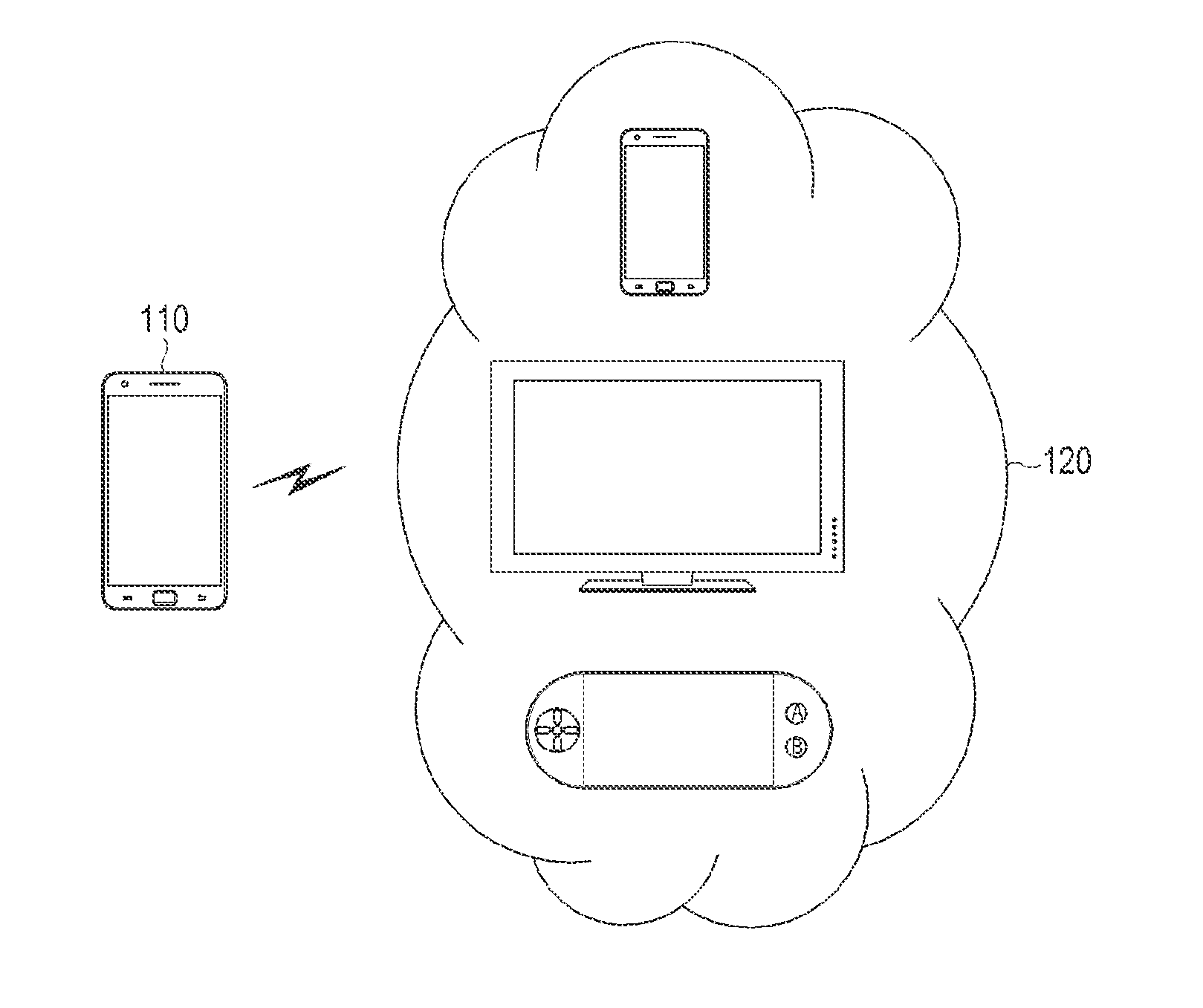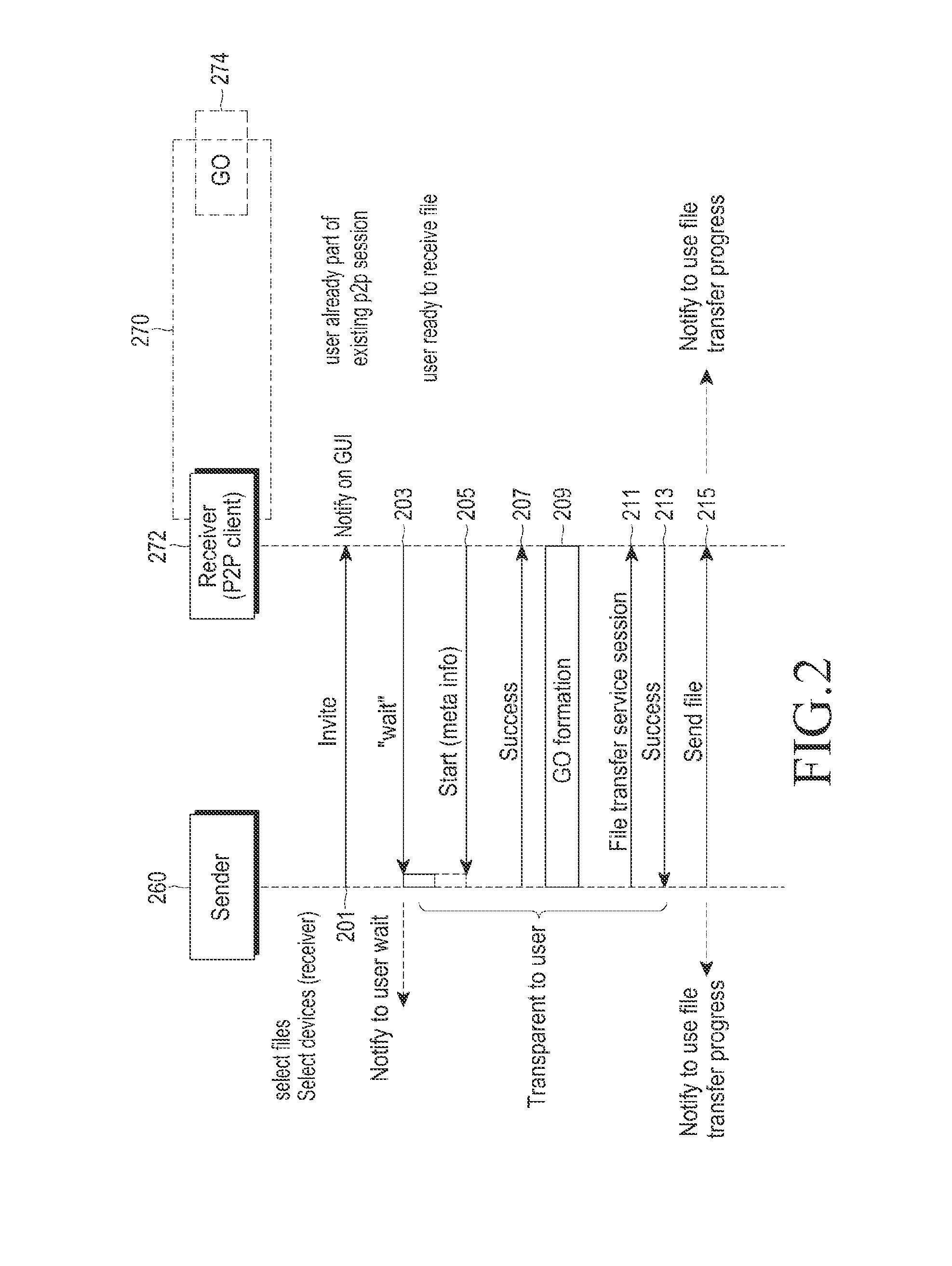Method and apparatus for handling topology in wireless communication system
- Summary
- Abstract
- Description
- Claims
- Application Information
AI Technical Summary
Benefits of technology
Problems solved by technology
Method used
Image
Examples
second embodiment
[0049]FIG. 4 is a flow diagram illustrating another example of a topology handling method in a wireless communication system according to the present invention. It is assumed that the receiver 372 and the GO 374 belong to the same group 370, and are connected to each other.
[0050]Referring back to FIG. 3, the receiver 372 sends a wait message to the sender 260 in step 303, and then sends a start message including metadata to the sender 260 in step 305. The metadata includes confirm information for a target desiring to receive the file. On the other hand, in FIG. 4, the receiver 372 sends a join message to the sender 260 in step 403, and then the sender 260 sends a join group message to the receiver 372 in step 405. The rest of the process is the same as that in FIG. 3. In other words, in FIGS. 2 and 3, the receivers 272 and 372, which have already formed a group, form a new group with the sender 260 after releasing the existing groups 270 and 370. However, in FIG. 4, the receiver 372...
third embodiment
[0051]FIG. 5 is a flow diagram illustrating a topology handling method in a wireless communication system according to the present invention.
[0052]In the third embodiment of the present invention, it is assumed that there is a plurality of receivers and a certain receiver belongs to (or has joined) a group. In addition, it is assumed that a peer device may support a concurrent mode-P2P session.
[0053]A sender 260 forms a P2P group with a receiver 560 in step 501, and sends an invite message to a receiver 572 in step 503. In this case, the receiver 572 is a P2P client. After step 503, the receiver 572 sends a wait message to the sender 260 in step 505.
[0054]Upon receiving the wait message, the sender 260 performs group formation on the receiver 560 in step 507. In step 509, the receiver 572 sends a join message including metadata to the sender 260. The metadata includes confirm information for a target desiring to receive the file. In step 511, the sender 260 sends a success message t...
PUM
 Login to View More
Login to View More Abstract
Description
Claims
Application Information
 Login to View More
Login to View More - R&D
- Intellectual Property
- Life Sciences
- Materials
- Tech Scout
- Unparalleled Data Quality
- Higher Quality Content
- 60% Fewer Hallucinations
Browse by: Latest US Patents, China's latest patents, Technical Efficacy Thesaurus, Application Domain, Technology Topic, Popular Technical Reports.
© 2025 PatSnap. All rights reserved.Legal|Privacy policy|Modern Slavery Act Transparency Statement|Sitemap|About US| Contact US: help@patsnap.com



